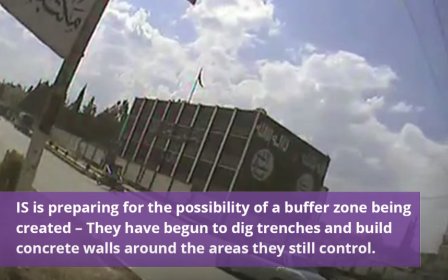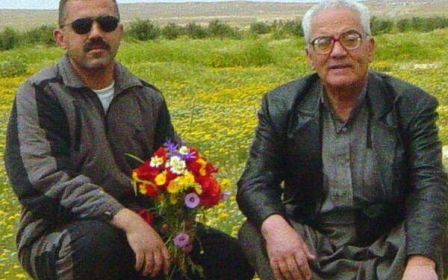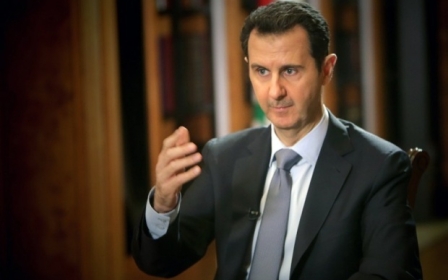The archaeologist who watched as Palmyra was blown up

NEAR PALMYRA, Syria - Lieutenant Milad’s platoon is located as close as the Syrian army gets to the latest Islamic State (IS) fortress at Palmyra. The young artillery officer holds a position about 4km west of this ancient city, with an excellent view of the citadel.
He has approximately a dozen soldiers under his command. They share a single bivouac, outside which I spot a shisha pipe. From this dusty outpost a soldier peers through powerful field glasses for signs of an IS ambush.
When I visited Lieutenant Milad on Friday, he told me that he had witnessed IS’s grotesque destruction of Palmyra from this hilltop position: the temples of Baalshamin and Bel, as well as the three ancient tombs. “We heard and saw the explosion - the noise was very big. They are killing our history; they are killing our culture; they are killing our families. IS are monsters.”
If IS goes ahead with its plan to blow up Palmyra’s famous Triumphal Arch, he and his men will have a grandstand view of that outrage, too. We could not see the ancient city on my visit because of the dust left behind by recent sandstorms. For Lieutenant Milad, there is a special pathos in what he has witnessed.
He studied archaeology at the University of Aleppo before the conflict began and afterwards failed to win a place at Cambridge University to study building restoration. He told me how he had been involved in archaeological work in Aleppo, which is now completely destroyed. In the irony of ironies, he also took part in a dig around the Bel temple, which he witnessed being annihilated two weeks ago. The bearded lieutenant, in his late 20s, told me that he had been a drummer for a big jazz band during the years of peace and was hopeful of army leave so that he could get married next month.
His soldiers told me how they were attacked by IS “almost every day”. They spoke of sudden night-time assaults and day-time ambushes from IS fighters camouflaged to be invisible in the desert sand. If the Syrian army gets its way, he and his fellow fighters may yet play a part in the relief of Palmyra.
Back in the headquarters building, 15 km behind the frontline, I met the general in charge. He would not allow me to use his name but said that he had fought throughout the desperate defence of Palmyra. He spoke of an eight-day fight before the Syrian army abandoned the city. He said his soldiers were driven back towards the western city of Homs, 100 km away, and that at one stage the rebels threatened the Shaer gas field of the Hayyan Gas Company.
At this point, he told me that he was promoted to the rank of general, with the grandiose title “High Military Commander of the Operation to Liberate Palmyra". He explained that “the directors of the high military leadership asked [him] to make all efforts to regain the city".
After that, the fortunes of the Syrian army changed. They drove the IS forces back 20 km to their present position, between 4km and 8 km outside the city. He said the Syrian army had “inflicted heavy losses because IS couldn’t stand in front of [it]”. The Syrian army would have made better progress, he said, but for what he called a “betrayal” by the rebel forces, Jabhat al-Nusra, and the Free Syrian Army. He said that they had promised to ease off their own operations then suddenly “IS offered them money and arms” and they again changed sides.
The general blamed nearby Turkey for enabling supplies to be delivered to IS during the battle for Palmyra - a claim at odds with the air campaign Turkey has launched against IS and the death sentence the group has passed on Turkish President Reccep Tayyip Erdogan. The general also alleged that the rebel group received money and weapons from Qatar and Saudi Arabia.
He told me that the noted antiquities expert, Khaled al-Asaad, who spent over 40 years restoring the Palmyra site but was beheaded by the IS in August after they took over the city, had been a friend of his. He said that he had talked to the professor on a daily basis at the height of the fighting and urged him to leave the city for his own safety.
“He was as old and ancient as Palmyra himself; he was part of Palmyra. I said to him, ‘you must leave the temple'. He said to me: ‘Nobody will harm me; I am a neutral man. I am only interested in the heritage of Syria'." With consequences that all the world knows, Khaled al-Asaad ignored the general’s advice.
Returning to Homs in the evening, I drank tea with a Syrian priest and told him about Lieutenant Milad. To my amazement, the priest said he knew him. With moving words, he recalled that Milad was “part of the relief of Aleppo. He came into my church and asked me to bless him, and said ‘I want you to pray for me so that I am not killed'.”
Writing this, I feel we should all pray for peace to return to Syria, and that young Lieutenant Milad might be able to lay down his gun, return to his old occupation of archaeology and apply his skills to rebuilding Palymra.
New MEE newsletter: Jerusalem Dispatch
Sign up to get the latest insights and analysis on Israel-Palestine, alongside Turkey Unpacked and other MEE newsletters
Middle East Eye delivers independent and unrivalled coverage and analysis of the Middle East, North Africa and beyond. To learn more about republishing this content and the associated fees, please fill out this form. More about MEE can be found here.




